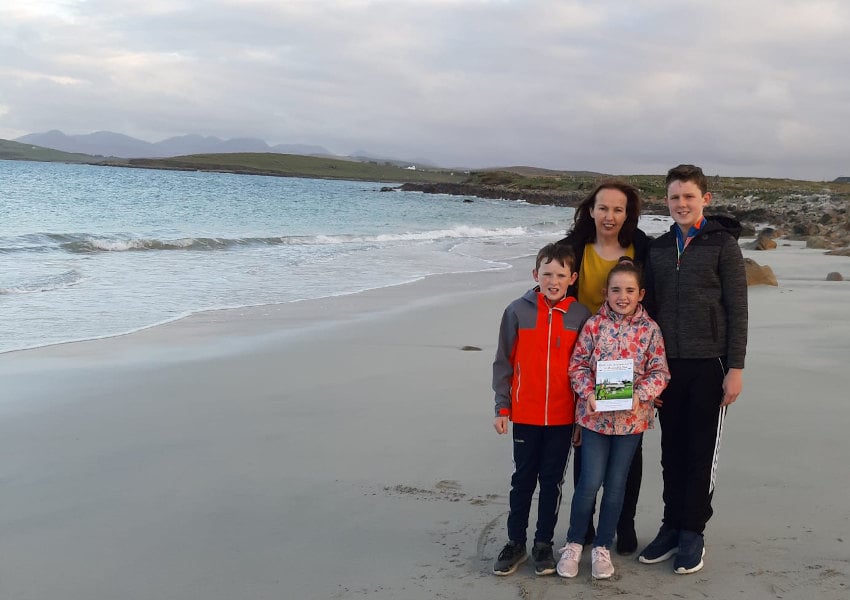A new children’s book focusing on the local history and mythology of the North West Connemara region has been launched this week in Co Galway.
And a portion of the proceeds is being donated to the Clifden RNLI lifeboats for their dedication to saving lives at sea.
Local author and youth worker Marie Feeney has produced From Our Ancient Land to Bountiful Sea, an informative and often humorous collection of local history and folklore tales with illustrations by Gary Kendellen.
These tales include accounts of the famous engineer Alexander Nimmo, who designed many piers and bridges in the Connemara area, and a blend of local history and myths that will appeal to locals and visitors alike.
Marie’s first book The Cleggan Disaster comprehensively and poignantly detailed the tragic drowning of 45 men from the fishing communities of Cleggan, Claddaghduff and Inishbofin and the Inishkeas, and also benefitted the local RNLI lifeboats.
 Author Marie Feeney with her children Ronan, Diarmuid and Michaela at Sallerna Beach in Cleggan, Co Galway | Photo: Marie Feeney
Author Marie Feeney with her children Ronan, Diarmuid and Michaela at Sallerna Beach in Cleggan, Co Galway | Photo: Marie Feeney
On the launch of her new book, Marie said: “The coastline of Connemara, while exceptionally beautiful is also treacherous and mostly utilised by people who use it either for pleasure or their livelihood.
“Thankfully in our community, we have a dedicated RNLI volunteer team who provide an invaluable service by saving lives each year, sometimes in the most challenging environments.
“The philosophy of the RNLI is astounding. The purpose to save lives, their vision to save everyone, their volunteer ethos, their charitable and community base. Every life matters, and of course their maritime expertise is crucial.”
From Our Ancient Land to Bountiful Sea is now on sale locally in Connemara at The Clifden Bookshop, Letterfrack Country Shop, Gala Cleggan and Sweeney’s Claddaghduff. The book is also available online at the inConnemara Bookshop.































































